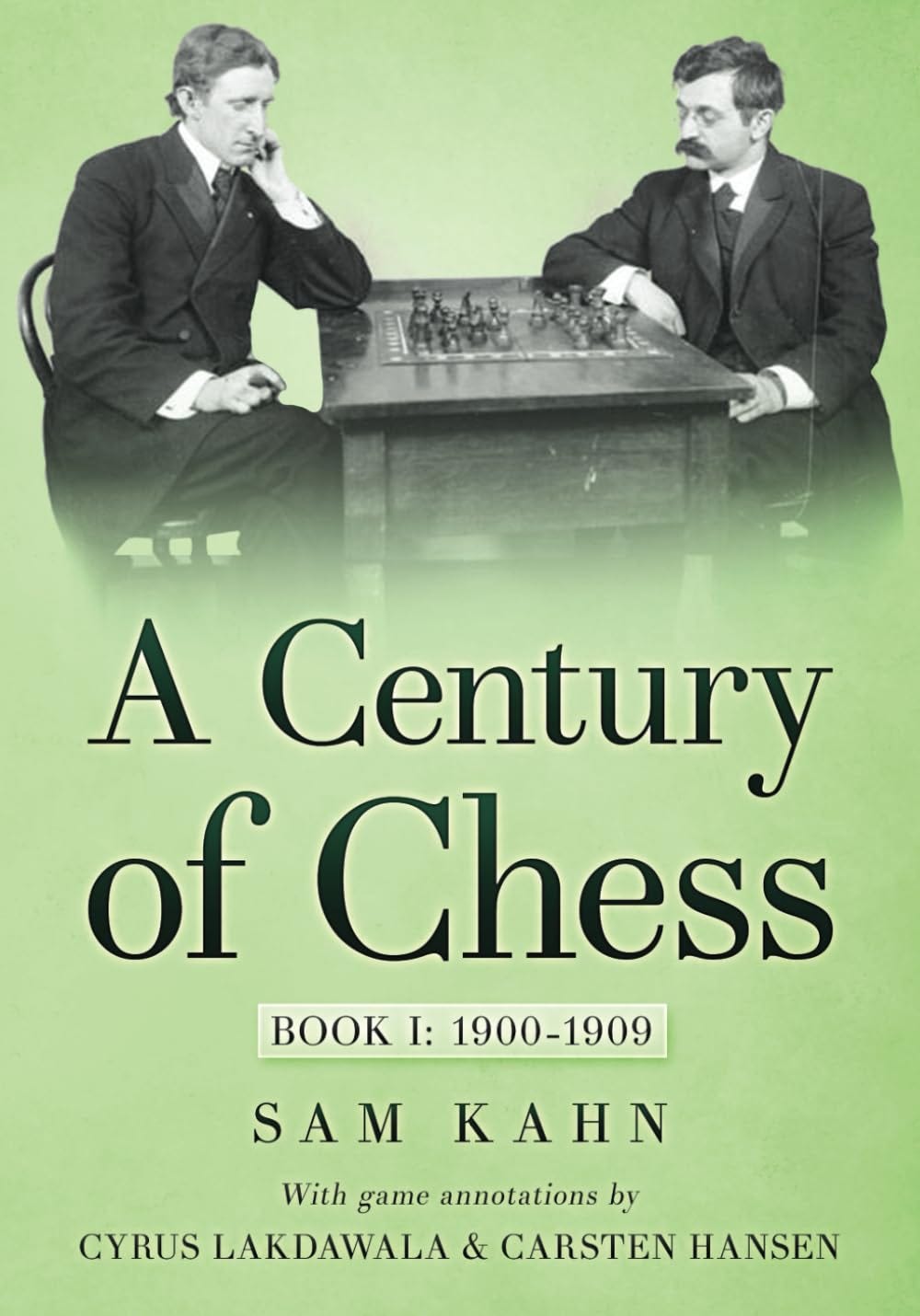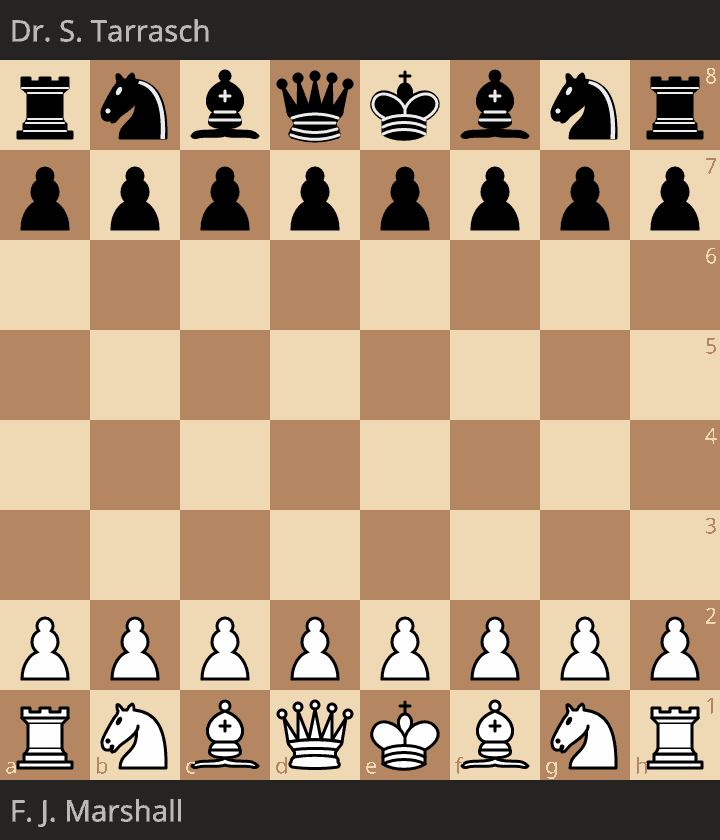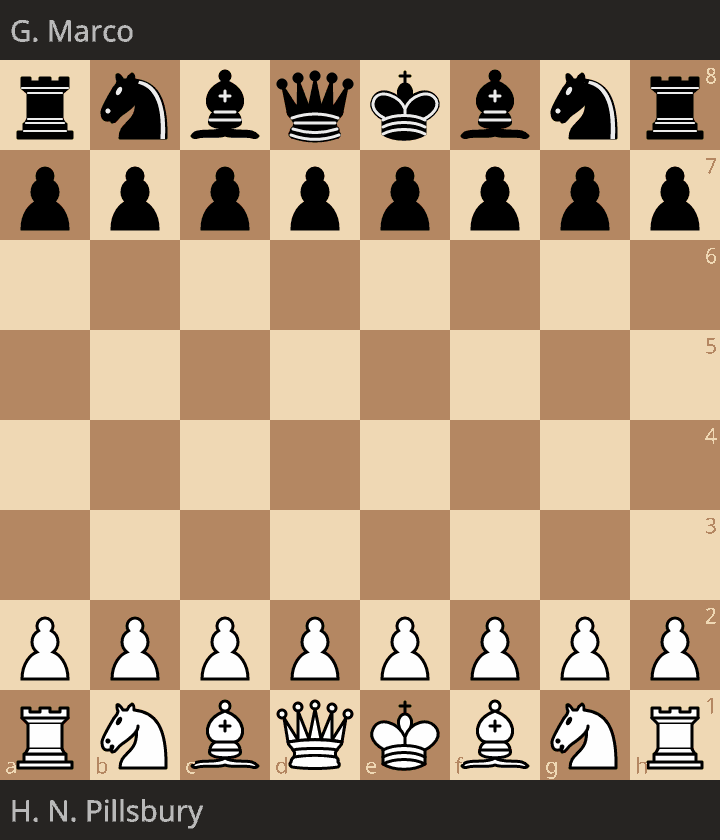Book Review: A Century of Chess Book I: 1900-1909
A decade's best chess hits
Thank you to Sam for the review copy!
Introduction
’s blog on chess.com is one for the ages. Beginning with 1900, he goes through each year and writes about events (such as a match or a tournament) in chronological order. The amount of time spent and work he does doing the research is astounding. And so if there’s any blog deserving of being distilled into a book, it’s definitely his.A Century of Chess Book I: 1900-1909 is the hopeful first in a series that is pregnant with potential volumes. The biographies and history are handled deftly by Sam, while he leaves the analysis to the cobelligerents Carsten Hansen and Cyrus Lakdawala (two co-authors whose books I may never stop reading).
What’s in the book
The book begins with a glowing foreword by chess historian and author Taylor Kingston, and then an introduction by Sam which gives the ambitious gist of the new series of books. A Century of Chess is a commendable effort, and I hope that Sam is rewarded duly for his hard work here with at least nine more volumes. There are tons of footnotes here — Sam is very well-read in the lore of chess history.
As someone who is studying chess in (mostly) chronological order, a broad collection featuring the Who’s Who of a decade is very welcome. In this time period, Lasker is a recently crowned world champion, and will be until 1921. But there are many other players whose games and style are worth studying, such as Henry Nelson Pillsbury, David Janowski, Geza Maroczy, Frank Marshall, Siegbert Tarrasch, Carl Schlecter, Ossip Bernstein, Akiba Rubinstein, and near the end of the decade, Jose Raul Capablanca comes into the picture just prior to his international debut at San Sebastian in 1911.
Kahn does an excellent job breaking down their playing styles into words, but he also chose which games to include, which are duly annotated by Cyrus Lakdawala or, in the case of a few, Carsten Hansen. Lakdawala’s annotations may subject the reader to a bit of narrative whiplash, but he has a certain verve that is difficult to match — and especially for such a prolific author (though perhaps the way he does this is by refusing to filter his sense of humor!). Hansen’s annotations come off a bit more scientific and dry in comparison, but no less informative. Both players have their own opinions about the positions they evaluate, so even though everything is checked by the engine, they’ll always indicate their preferences when necessary.
Sam’s taste in games is agreeable to my own. Every game in this book deserves to be here, and it’s incredible that he was able to concentrate an entire decade’s worth of chess developments into 41 games. Sam goes in chronological order, tournament by tournament, match by match, from 1900 to 1909. We also get some much needed context to the organization of early chess tournaments by wealthy patrons who were also lovers of the games. There were some clear missteps and infamous conflicts during this time period, but in the end, things were sorted out. The roots of modern-day events like the Sinquefield Cup can be seen even a century earlier when they were still figuring out how to story the tradition.
A survey of all the big names
Each of the above-named players (plus some others) are given a little space in the prose for their history, and Sam treats each of them with respect, relating their life and career choices to their own circumstances, and in many cases a player’s philosophical view of life was reflected rather keenly in their style of chess play. Tarrasch is infamous for his “correct” view of chess; Lasker’s position was more along the lines of “struggle” — he was less concerned with the theory and more with doing what it takes for him to win. Marshall was a “romantic”, sacrificing his queen as often as possible (it seems). Maroczy was “dutiful” — to the point that he never fully devoted himself to chess despite being one of the world’s best players. Schlecter was “humble”, taking draws and forgoing prize money even though he was of little means himself. Kahn’s notes on the player’s lives give a lot of insight into their chess (or maybe it is vice versa).
But Kahn also gives a peek behind the curtain regarding the coming Sturm und Drang generation of players — those who will break the bonds of the classicist school that has persisted and dominated since Steinitz’s triumph. There we see mention of people like Nimzowitsch, Vidmar, Tartakower, and Duras — players whose names haven’t quite come to the fore, but are bubbling in the background and will be flaming hot in the following decade. Chess players and style and theoretical developments don’t happen in a vacuum, and the anticipation is clearly building.
A look at the players through Sam’s studious eyes
I particularly loved Sam’s take on Lasker, whose reputation as a second-rate swindler was undeserved. Sam puts it plainly: Lasker liked to complicate the game and approached it from a psychological standpoint. I’ve always thought of Lasker as a fighter — a street brawler who wants to get you into an uncomfortable position so he can twist your arm into submission. The games chosen here with Lasker (even when he loses) really show off this element of his play well. Lasker wasn’t a classicist, nor a romantic, but something else entirely.
I think the main success for Kahn (regarding my own thoughts, anyway) was the rehabilitation of Tarrasch’s reputation. It should be said — Tarrasch was an extremely strong player, and while he played second fiddle to the Laskers, Capablancas, and Alekhines of the chess world, he had good reason to butt heads with people like Nimzowitsch in his later years: His tournament results bear all of it out. Kahn points out that Tarrasch loved to play with space, which is a clear antithesis to the opening principles of the hypermodern school. And while studying the adherents of that school gave me a real appreciation for the “preachings” of people like Reti and Nimzowitsch, it also left a single-dimensional view of Tarrasch’s play. So, one thing I’ve determined to do after reading A Century of Chess is to play through Tarrasch’s own Dreihundert Schachpartien and more familiarize myself with the dogged classicist himself.
There is also the case of the American sorrow Henry Nelson Pillsbury, whose attacking play in the Queen’s Gambit is exemplary — we really do need a more accessible collection of his games! I was convinced of this a couple years ago, but this book reinforced my thoughts on the matter.
And we shouldn’t let Marshall go by without more mention either. Marshall was one of the romantics born outside of his time, and while he lost many a doozy, he also played some seriously beautiful games. Nowhere more is his personality on display but in the final game of the book (truly saving the best for last): Game 11 of Marshall’s match against Cuban upstart Jose Raul Capablanca that was played in New York 1909. The fireworks of this game so clearly show the different styles of the combatants: Marshall was firing off his high caliber tactical guns and Capablanca was deftly dodging each shot, countering with a sly strike of his own. In the end Marshall is shown to have left the top of the world stage, just as Capablanca is starting to enter it, but what a way to go out!
Conclusion
And what a way for a book series to start! If there’s more of the same coming in Book II, I will not be disappointed. This is a game collection primarily for the enjoyment of the game, not improvement — but as is often the case if you enjoy studying chess, you’re likely to improve and come away with some new ideas anyways. At the very least, you will gain an increase appreciation for the history of the game, and the history of some of its greatest players. This is a book about chess for people who love chess, written by a man who loves chess. What’s not to like?





"This is a game collection primarily for the enjoyment of the game, not improvement" <-- I'm not convinced this is true. Based on your recommendation (for enjoyment) I got a copy, and have started playing through the games . . . I think it can also be used as a book of improvement (imho).
That said: thanks for recommending it, which caused me to get it, and I am enjoying it a lot!
Hello, Just Subscribed..... We also have a chess newsletter. Hope you will like it.